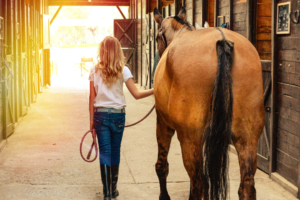The Science Behind the Claw Machine
You’ve probably been there before: standing in front of brightly lit claw machines, quarters in hand, eyeing that perfectly positioned plush toy. Your friends gather around, offering advice like seasoned casino strategists. “Go for the one on top!” “Wait for the claw to stop swinging!” But as you watch your hard-earned money disappear into the slot, one question burns in your mind: Is this really about skill, or am I just gambling with stuffed animals?
The answer might surprise you – and it’s more complex than you think.
The Great Debate: Skill vs. Chance
Think you’re just pressing buttons and hoping for the best? Think again. Claw machines exist in a fascinating gray area between arcade game and chance-based entertainment, combining elements of both skill and luck in ways that have sparked heated debates among players, operators, and even lawmakers.
The Physics Behind the Grab
Before we dive into the skill-versus-luck debate, let’s break down what actually happens when you press that tempting red button. A claw machine operates through a sophisticated system of:
- Electromagnetic solenoids that control grip strength
- Mechanical gears that determine movement speed
- Tension springs that affect grabbing power
- Digital programming that regulates win rates
Understanding these components is crucial because they reveal something fascinating: claw machines are marvels of engineering designed to be both beatable and profitable.
The Skill Elements: What You Can Control
Despite what skeptics might claim, there are genuine elements of skill involved in claw machine success. Expert players focus on:
Positioning Strategy
The most skilled players understand that positioning isn’t just about getting the claw over a prize – it’s about analyzing the prize’s orientation, weight distribution, and potential entanglement with other items. A properly positioned grab can mean the difference between victory and defeat.
Timing Mastery
Just like a professional athlete, timing is everything. The best players know exactly when to drop the claw, accounting for both the natural swing of the mechanism and the specific characteristics of their target prize.
Prize Selection
This is where true expertise shines. Veteran players don’t just go for the cutest plush toy – they analyze factors like:
- Surface texture and grip potential
- Size relative to the claw’s dimensions
- Position in the prize pile
- Weight and density
The Luck Factor: What’s Beyond Your Control
Here’s where things get interesting – and sometimes controversial. Modern claw machines incorporate several elements that introduce an undeniable element of chance:
Programmable Grip Strength
Most modern machines are programmed to alternate between strong and weak grips based on a predetermined ratio. This means that even perfect positioning doesn’t guarantee success if you’re playing during a “weak grip” cycle.
Prize Positioning Variables
Even the most skillful player can’t control:
- How prizes settle after previous attempts
- Hidden obstacles beneath visible prizes
- Unexpected weight shifts during retrieval
The Truth About Win Rates
Here’s a shocking revelation: many modern claw machines are programmed with specific win rates, typically ranging from 1-in-15 to 1-in-40 plays. However, this doesn’t mean winning is impossible – it just means the machine will only apply full gripping power at certain intervals.
Mastering Claw Machines: Expert Tips
Ready to improve your chances? Here are some professional-grade strategies that combine skill with probability management:
1. The Scout-and-Strike Approach
Watch others play before investing your money. This helps you:
- Identify which prizes have been loosened
- Spot patterns in the machine’s behavior
- Determine if the machine is in a “paying” cycle
2. The Corner Strategy
Instead of going for direct grabs, skilled players often:
- Target items near corners where there’s more stability
- Use the corner as a funnel to guide prizes toward the chute
- Take advantage of wall friction to maintain grip
3. Multiple Points of Contact
Advanced players look for opportunities to:
- Grab items with multiple claw prongs
- Create chain reactions with carefully positioned attempts
- Use adjacent prizes for additional support
The Legal Perspective
Interestingly, the skill-versus-luck debate has legal implications. Different jurisdictions classify claw machines differently:
- Some consider them games of skill and regulate them as arcade games
- Others classify them as gambling devices requiring special licenses
- Many fall into a hybrid category with unique regulatory requirements
The Final Verdict on Claw Machines
So, do claw machines require luck or skill? The answer is both – but perhaps not in the way you’d expect. While skill can significantly improve your chances, the mechanical and programming elements introduce an unavoidable element of chance.
Think of it like poker: A skilled player will win more often than an amateur, but even the best players can’t win every hand. The key is understanding both the elements you can control and those you can’t.
Looking to the Future of Claw Machines
As technology evolves, so do claw machines. Modern variants include:
- Digital interfaces with bonus features
- Smart sensors that detect successful grabs
- Online connectivity for prize tracking
- Mobile app integration
These advances are changing the game, but the fundamental blend of skill and chance remains at the heart of their appeal.
The Last Grab
Whether you’re a casual player or an aspiring claw machine champion, success comes from understanding this unique blend of skill and chance. The next time you stand before that glowing cabinet, remember: while you can’t control everything, knowledge and technique can definitely tip the odds in your favor.
Just don’t blame us if you still end up spending more quarters than you planned – that’s all part of the game’s enduring charm.
























